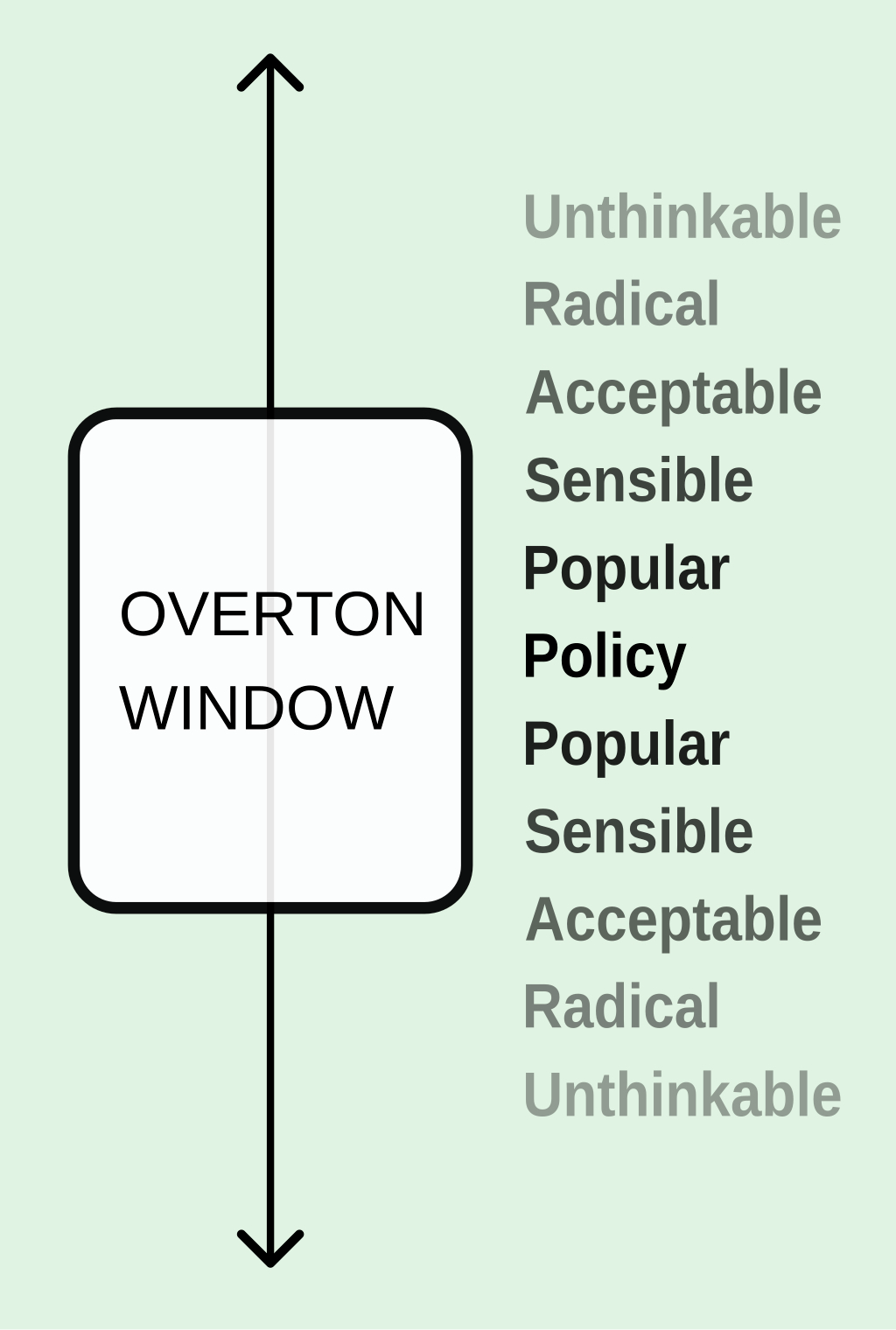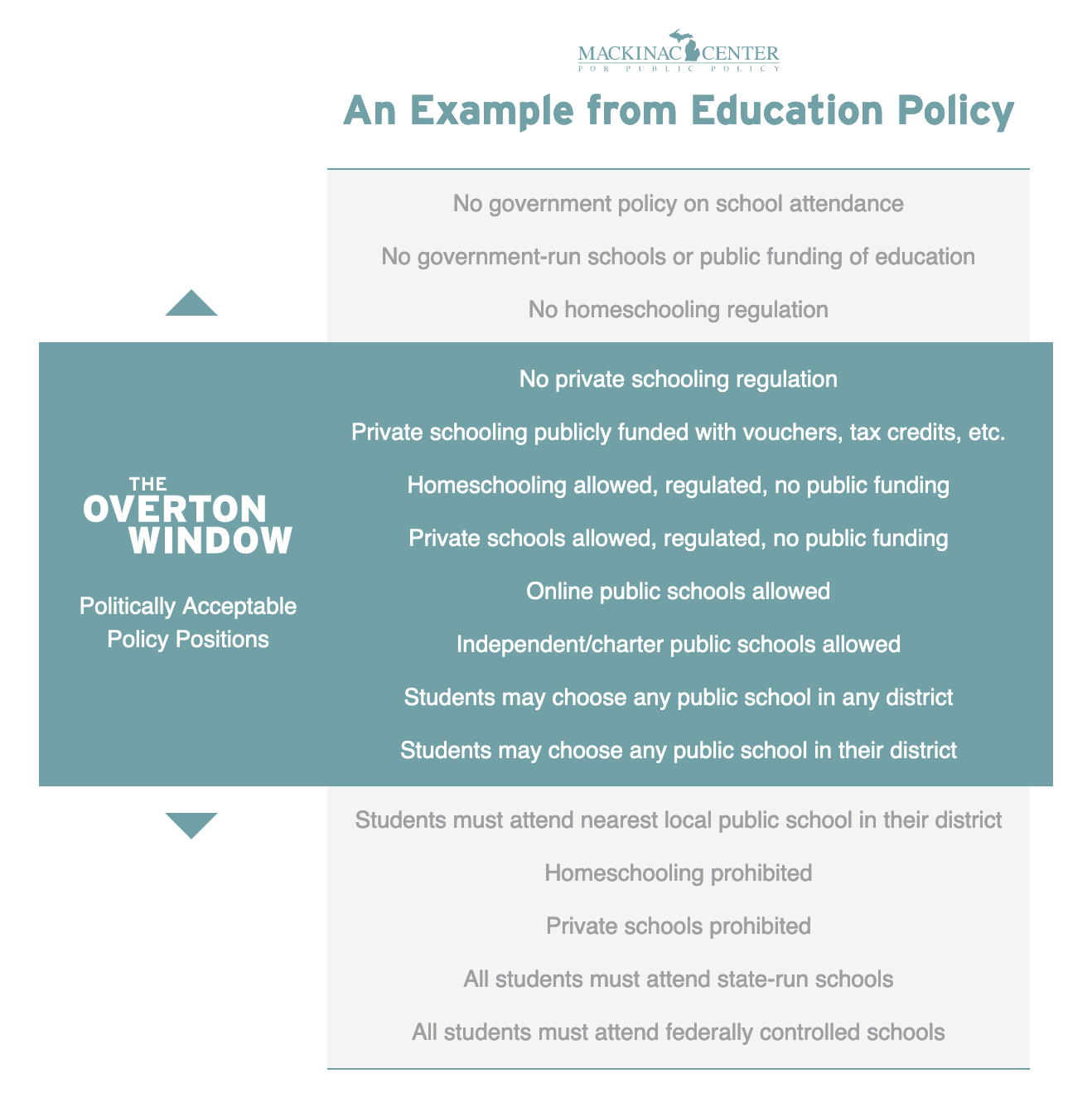Overton Window is a range of possibilities
The Overton Window (originally intended to describe the domain of politics and generalized here) refers to some group of adjacent outcomes along a spectrum that fall into a window of possibility. Outcomes inside the window are deemed acceptable by those who hold power, meaning they could support the outcome and not lose power. Policies outside the window are unacceptable at the moment. Ideas, over time, can shift the size or spread of the window of possible outcomes. Social change affects political change which makes possible policy change.[1]

Simplified diagram of Overton Window spectrum of options.[2]
Ideas take time to produce changes in policy. This can be frustrating, but it also means that ideas policymakers refuse to countenance now may yet — with patience — become law... The migration from mere ideas to the law of the land can be described by a model called the Overton Window.
At any one time, some group of adjacent policies along the freedom spectrum fall into a "window of political possibility."
- Policies inside the window are politically acceptable, meaning officeholders believe they can support the policies and survive the next election.
- Policies outside the window, either higher or lower, are politically unacceptable at the moment. If you shift the position or size of the window, you change what is politically possible.
In our understanding, politicians typically don't determine what is politically acceptable; more often they react to it and validate it. Generally speaking, policy change follows political change, which itself follows social change. The most durable policy changes are those that are undergirded by strong social movements.

see also:
Overton, Joseph. “The Overton Window.” The Mackinac Center for Public Policy, http://www.mackinac.org/OvertonWindow. ↩︎
Original diagram by Hydrargyrum available under [CC BY-SA 2.0 ↩︎